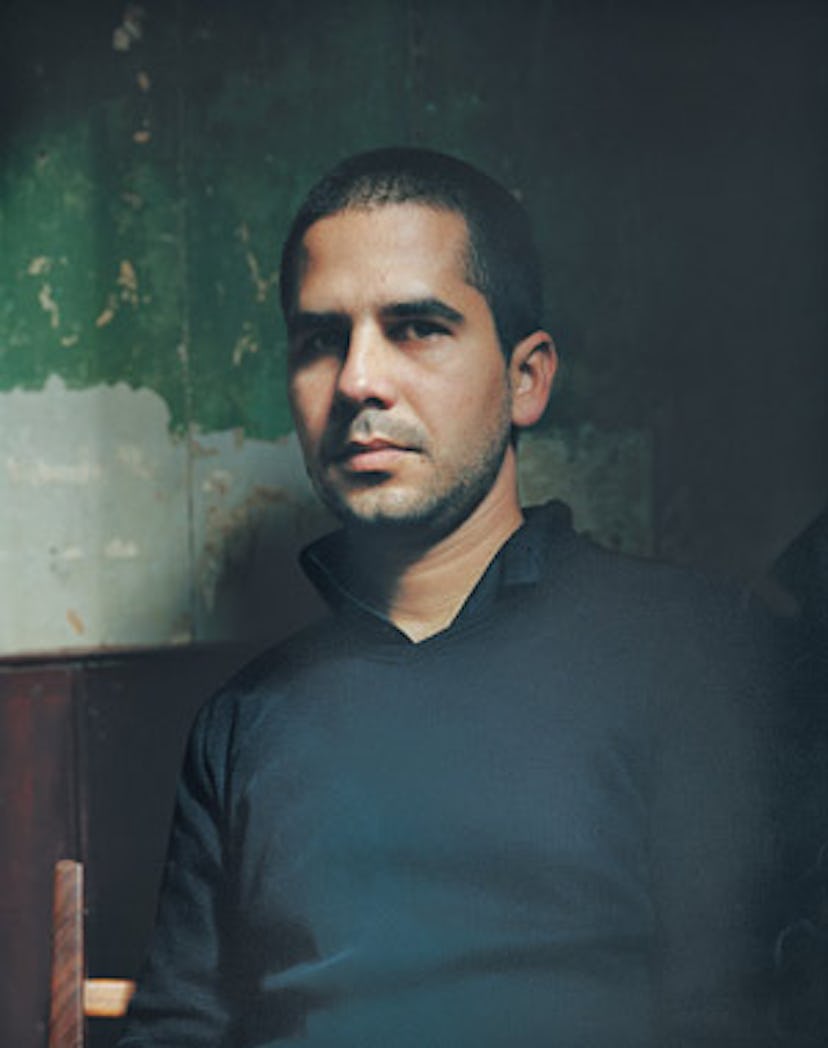Wilfredo Prieto didn’t travel outside his native Cuba until 2000, when he was a 22-year-old art student in Havana. During an international artists’ workshop on the Caribbean island of Curaçao, he put an ornamental plant in a wheelbarrow and took it on a walking tour of the island, in a performance piece that he called Walk. “That trip was my first experience with the capitalist world, and it allowed me to see the situation in Cuba with different eyes,” he says. At the moment the affable, self-assured Prieto is sitting in the restaurant of a trendy hotel in London, having spent much of the intervening eight years experiencing more of the capitalist world than most Americans see in a lifetime.
S/T (crane), 2006.
Since making his international debut, Prieto has charmed critics with his distinctive brand of conceptual art. He has exhibited all over the world, including at the Louvre and the Venice Biennale, and reaped prestigious awards with work that manages to be accessible—even flirting with slapstick—while retaining a disquieting ability to leave the viewer questioning his or her assumptions about reality. Prieto’s genius lies in his economy of expression, his ability to cut to the quick with only a subtle shift in what the viewer expects to see. For one of his most exhibited works, first shown at the 2003 Havana Biennial, he flew flags from 30 nations on poles along the seafront, as if marking a major international monument. The flags all were authentic in every detail of design and manufacture except for their colors, which were rendered in anonymous black, white and gray. “It is a work in which rivals become accomplices,” Prieto says through a translator. More recently, for a solo exhibition at Nogueras Blanchard, his Barcelona, Spain, gallery, Prieto laid a red carpet—the standard movie-premiere variety—along the length of the otherwise empty gallery. That was it. But a hint of dirt near the edges suggested that the carpet covered an accumulation of dust and debris.
His most recent coup has been beating out more than 400 other applicants to win the Cartier Award at London’s Frieze Art Fair. For the commission he’s mounting there in October, he’ll be reprising the motif of the red carpet, only this time it will wend its way unobtrusively through the fair and finally up a flagpole to become the flag itself. “Wilfredo makes these things that are essentially political but where the politics is subsumed in the lyrical aspect,” says Frieze Projects curator Neville Wakefield. Given the red carpet’s connotations of wealth and celebrity, says Wakefield, “one take on it could be that he’s flying the flag of this new nation of ‘Richistan.’”
Prieto’s talent for surgical strikes on the tired mainstays of our visual vocabulary may come in part from the clarity his unusual double life affords him. He hopscotches between the communist world that reared him and the capitalist world that fuels his career as a successful artist, spending six weeks a year in Cuba, two months in Barcelona and the rest of the year traveling from exhibition to residency to work in progress. In the manner Americans associate with Soviet gymnasts, Prieto was singled out to study art at age nine. His branching into conceptual art began as early as 11, when, he says, “I made an abstract sculpture for a test, and a Russian ceramics professor who was judging the test said to me, ‘I just see crap.’ He made me cry.” Laughing, he adds, “I had so much academic teaching that it was natural at some point to break with it.”
Ironically, the Cuban government’s restrictions on free speech and the press can be liberating for an artist. “In Cuba people have to be informed through what we call radio bemba—which is like word of mouth,” he says. “And it’s interesting that this way the information is really processed and played with.” He recalls a conversation with a Museum of Modern Art curator who was visiting Cuba. “He said he wanted to find ‘authentic’ Cuban art—he was looking for more vegetation or something,” Prieto says, laughing. “But these days, authentic art is international.”
Artworks courtesy of the artist and Nogueras Blanchard, Barcelona.
